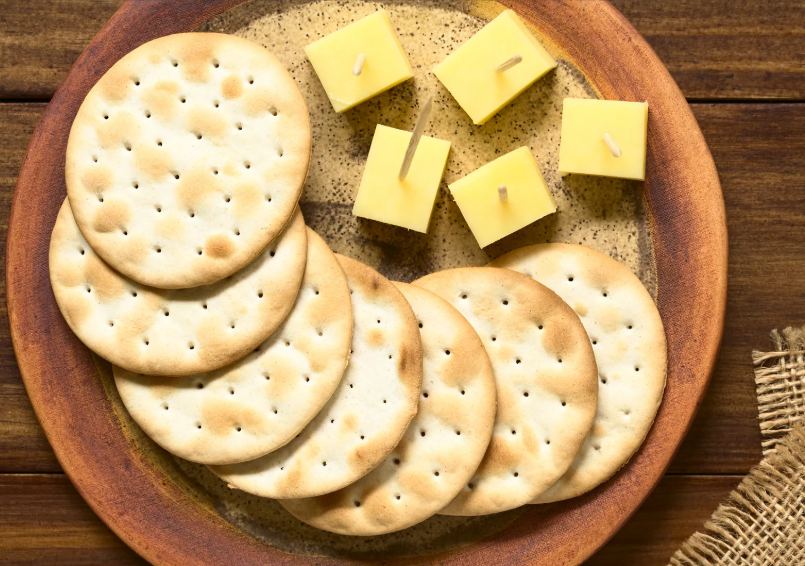Soda crackers are a popular, low-calorie snack made from refined flour and typically low in fat, but they offer little fiber or nutritional value. While eating soda crackers in moderation is unlikely to cause weight gain, their high carbohydrate and sodium content can add up quickly if consumed in large quantities, potentially contributing to excess calorie intake and bloating over time.
For those mindful of weight management or seeking a more nutritious option, choosing whole grain crackers with higher fiber content and practicing portion control is recommended.
Evaluating the Nutritional Impact of Crackers
Crackers represent a diverse category of snack foods, with significant variation in their nutritional profiles depending on their ingredients and preparation methods. Assessing the health implications of consuming crackers requires a careful review of their ingredient composition, nutritional labeling, and serving sizes.
Ingredient Quality and Nutritional Value
The nutritional quality of crackers is primarily determined by their base ingredients. Crackers formulated with refined flours, such as white flour, generally offer limited nutritional benefit compared to those made with whole grains. Whole grain crackers provide higher fiber content, which supports gastrointestinal health and promotes satiety. Additionally, whole grains are a source of essential micronutrients, including B vitamins and antioxidants, contributing to overall health maintenance.
It is also important to consider sodium content, as many commercial crackers are high in sodium, which may elevate blood pressure when consumed in excess. Reviewing ingredient lists for added sugars, saturated or trans fats, and preservatives is recommended. Selecting brands that emphasize natural ingredients and minimal processing can enhance the nutritional value of this snack.
Carbohydrate Content in Saltine Crackers
Saltine crackers are a common choice for snacking or as an accompaniment to soups. However, they are typically produced from refined flour and are relatively high in carbohydrates. For example, a standard serving (approximately five crackers) contains about 10 grams of carbohydrates. Individuals adhering to low-carbohydrate or ketogenic dietary regimens should monitor their intake of saltine crackers, as their carbohydrate content may not align with dietary goals. Alternative options, such as crackers made from seeds or nuts, provide lower carbohydrate content and additional nutritional benefits, including healthy fats and protein.
Crackers and Weight Management
Whether crackers contribute to weight gain depends largely on portion control and overall dietary patterns. Crackers are calorie-dense, meaning they provide a substantial number of calories in a small serving. Consuming large quantities without attention to serving size can lead to excessive caloric intake and potential weight gain. Mindful eating practices, such as pre-portioning snacks or using smaller plates, can help regulate consumption and support weight management.
Pairing crackers with nutrient-dense foods, such as lean proteins or healthy fats, can increase satiety and reduce the likelihood of overeating. For example, combining whole grain crackers with hummus or fresh vegetables can create a more balanced and satisfying snack.
Crackers and Weight Loss
Crackers can be incorporated into a weight loss strategy, provided the selection and portion sizes are appropriate. Whole grain or multigrain crackers are preferable due to their higher fiber content, which aids digestion and helps stabilize blood glucose levels. Reading nutrition labels and adhering to recommended serving sizes can further support weight management objectives.
Choosing healthy toppings, such as guacamole, low-fat spreads, or sliced vegetables, can enhance the nutritional profile of a cracker-based snack without significantly increasing caloric intake. Experimenting with various nutrient-rich toppings can also help maintain dietary variety and satisfaction.
Unsalted Crackers and Sodium Intake
For individuals concerned about sodium intake or cardiovascular health, unsalted crackers may be a preferable option. While they may lack the flavor intensity of salted varieties, unsalted crackers can support efforts to reduce dietary sodium. It remains essential, however, to evaluate the overall nutritional profile, including fiber and whole grain content, when selecting unsalted crackers.
Saltines as a Snack Choice
Saltine crackers are low in fat but tend to be high in both carbohydrates and sodium. While they can be included in a balanced diet if consumed occasionally and in moderation, individuals seeking a more nutrient-dense snack may benefit from choosing whole-grain or multigrain alternatives.
Conclusion
Crackers can be part of a healthy diet when selected and consumed thoughtfully. Prioritizing whole grain varieties, monitoring sodium and carbohydrate content, and practicing portion control are key strategies for maximizing their nutritional benefits. By being mindful of ingredients and serving sizes, crackers can serve as a convenient and enjoyable snack that aligns with a variety of dietary needs and health objectives.









